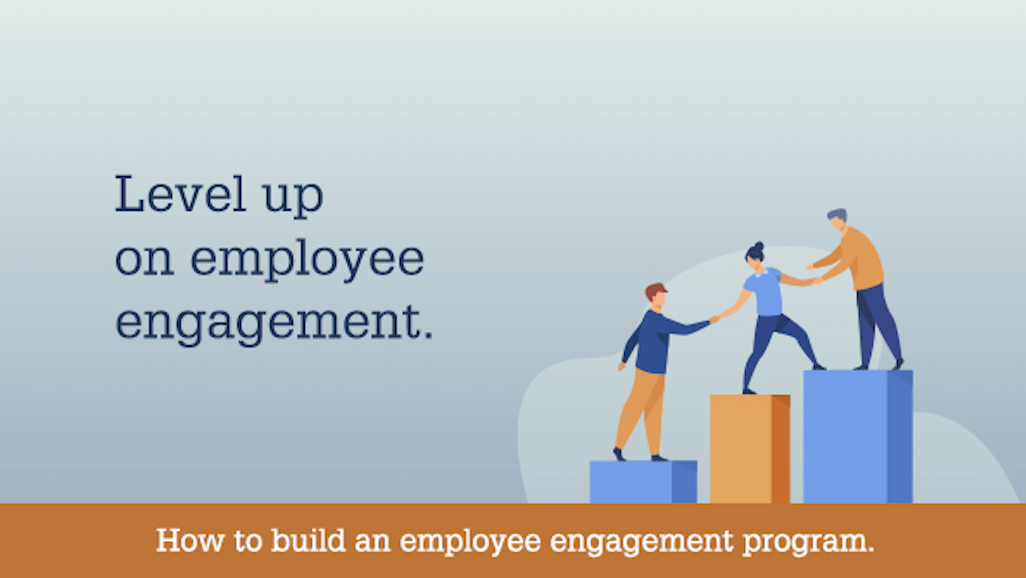Employee engagement is good for everyone. Workers who are truly committed to their work make fewer mistakes, are more productive, and take more ownership of their company’s success. However, in a transient, work-from-home world, employee engagement can feel elusive. Implementing the right employee engagement program can make this goal much more achievable.
What employees really want
“I’ve learned that people will forget what you said, people will forget what you did, but people will never forget how you made them feel.” – Maya Angelou
Just as they do in their personal relationships, employees want to feel valued, respected, and supported in their work life. They want to be listened to and have their ideas acted upon. They want to produce meaningful work while having the opportunity to learn and grow. They want their leaders to be engaged in the business without micromanaging. They want to be depended upon to do a good job. Trusted employees pay that trust forward to build a more loyal customer base.
Begin at the beginning
It can be difficult to secure buy-in from current employees when it comes to new company initiatives. Realistically, employees who are already disengaged may not be thrilled with the idea of an employee engagement program. They may have been involved in failed programs at other companies or they may not understand the potential value of such programs. Starting with new employees by creating a solid onboarding program can ease all employees into a new mindset.
Build trust through connection
Closely involving your current employees in the design of a new onboarding program is a great way to open a line of communication about all the positives and negatives of your business. Working together to plan for the future of the company is a great, non-threatening opportunity for your employees to pinpoint trouble spots and suggest improvements.
Get to know your employees
Although there are some basic connecting threads that run through most employees, each employee is human and, therefore, has unique qualities. Take the time to recognize these qualities and get to know each employee as an individual. Some ways to accomplish this are:
- Engage in team-building. Contrary to popular belief, this doesn’t have to be a big production. Team-building can be done Informally and even frequently with the focus on fun and just putting work aside for a bit.
- No, really, stay casual. Making team-building exercises too formal or too obvious can result in that teenaged forced-family-fun feeling.
- Take a survey. Anonymous surveys make employees feel more confident to offer criticism, but this may not be possible for smaller organizations. Regardless of your size or the type of survey, don’t be afraid to ask your employees what they really think.
- Allow your employees to know you. Employer-employee boundaries are important, but they don’t mean you can’t know one another on a human level. Honest human interaction among peers and with leadership creates an environment in which employee engagement can more easily thrive.
- Don’t overthink it. Make small talk. Listen to stories about family, friends, and pets. Be genuinely interested in and concerned about your employees’ everyday lives.
Regularly recognize good work
Knowing your employees as people will go a long way when it comes to rewarding them for good work. Differences in personality mean differences in how we like to be rewarded. Some employees like verbal compliments, some like thank you notes, some like public recognition, and some like good ol’ cash and prizes. Trying to encourage greater engagement through the wrong kind of reward is fruitless and may actually work against you.
Get on the same page
Quite literally get on the same page as your employees by creating an employee guide. Even if you already have one, an update may be in order. In the guide, you will want to include:
- A mission statement
- Company values
- Clear expectations
- Standard operating procedures
- Employee incentives
Make your employee guide positive. Make it down-to-earth. Make it reasonable. An employee guide should not be a stuffy list of rules and consequences, but rather a source of unifying goals and principles. The tone of the funeral services business is changing, and it is essential to include employee guidelines in this change.
Get help if need be
You may need an outside expert who understands what works and what doesn’t when it comes to employee engagement. The perks of employee engagement — productivity, profitability, retention — can quickly make up for the cost of professional employee engagement services. Don’t be afraid to ask for help; it’s worth it.
Employees are an extension of you and your business. Putting in the effort to take your employees from working for a paycheck to working for fulfillment and the good of the company can give your business a huge edge and a much brighter future.
Contact the JCG team today to learn how Johnson Consulting Group can help you plan your future.
